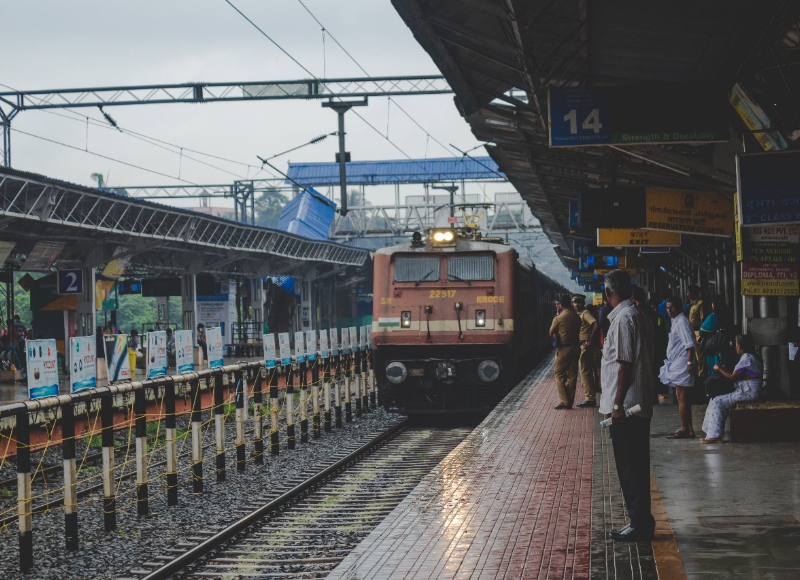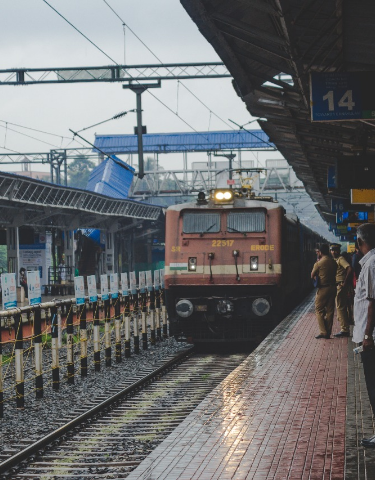Introduction
Mumbai, India’s bustling financial and cultural capital, is home to one of the largest and most heavily trafficked railway systems in the world. Central Railway, a key division under Indian Railways, plays an indispensable role in maintaining the city’s daily rhythm, with millions of commuters relying on its services. However, even the most vital infrastructure systems are subject to disruptions. One such major disruption is the Mumbai Central Railway Mega Block, an event that temporarily halts or reroutes trains on a key section of the railway for infrastructure maintenance, upgrades, and repair work.
In recent years, these mega blocks have been occurring with increasing frequency, with the most recent announcement of a 15-day mega block causing widespread concern. The mega block will affect thousands of commuters, with numerous trains being canceled, rerouted, or delayed. This situation presents a substantial risk to the operational efficiency of the Mumbai railway system, which can result in economic losses, safety hazards, and reputational damage.
From a risk management perspective, understanding and mitigating the potential impacts of such a disruption is essential. This blog aims to analyze the risks associated with this mega block, propose risk mitigation strategies, and suggest best practices for all stakeholders involved.
Risk Identification
A risk-based lens to the Mumbai railway mega block reveals multiple vectors of concern:
Operational and Infrastructure Risk
- The primary operational risk is the immediate transfer of millions of commuters to parallel transport systems, causing severe functional collapse. Major arterial roads become critical congestion points, paralyzing city-wide movement. The resultant traffic density severely compromises emergency service response times (ambulances, fire services).
- The compensatory deployment of additional BEST buses and the increased load on the Mumbai Metro network inherently reduce the quality and safety of these alternative services. Overcrowding on Metro platforms and inside buses creates public safety hazards, and increased vehicular wear-and-tear raises future maintenance costs and operational failure probability for these non-rail assets.
- There is an inherent risk that the infrastructure works (yard remodelling, girder launch) may not be completed within the precise 15-day window due to unforeseen site conditions, material logistics issues, or labour challenges. Any extension of the block would exponentially increase the existing socioeconomic damage, triggering a high-severity, unplanned risk event.
Socioeconomic and Financial Risk
- Companies heavily reliant on timely staff presence (e.g., financial services, retail, manufacturing) face significant productivity loss due to high employee absenteeism and chronic delays. The compounding cost of man-hours lost across the city represents an uncaptured economic damage metric.
- The diversion and rescheduling of long-distance Mail/Express trains, and the crippling road congestion, directly impede intra-city and inter-state freight logistics. This affects the ‘last mile’ delivery critical for e-commerce and the movement of time-sensitive raw materials and perishable goods, leading to inventory backlogs and contract penalty risks. Adopting financial risk management techniques can help stakeholders reduce the occurrence of such risks that negatively impact their financial position.
- Commuters face increased daily expenditure due to reliance on higher-cost alternative transport (taxis, ride-sharing) and significant psychological stress from extended, unpredictable travel times, a factor which has demonstrable effects on public health and workplace performance.
Reputation Risk
- While the block is essential for safety, any perceived failure in management—such as poor communication of cancellations, inadequate alternative services, or project overruns—directly erodes public trust in the Central Railway administration. This public dissatisfaction can generate negative media cycles and political scrutiny, compounding the administrative burden.
- The mass convergence of commuters onto alternative hubs increases the risk of platform-related accidents, stampedes, and localized law and order issues (e.g., altercations over limited bus/taxi availability), thereby shifting a major safety risk from the planned infrastructure site to the public transit periphery.
Environmental Risk
- The operation of a multi-day infrastructure block during the monsoon season introduces a severe, unmitigated hazard. Adverse weather (heavy rain) would further paralyze alternative road transport and complicate on-site construction, transforming a high-impact event into a near-paralysis state.
Risk Mitigation Strategies
1. Advanced Communication Systems
- Implement an AI-powered communication system that provides real-time updates to passengers via mobile apps, digital displays, and other platforms. This system should be integrated with the train management system to ensure the accurate and timely delivery of information, reducing uncertainty and confusion.
- Use platforms like Twitter, Facebook, and Instagram to keep passengers informed in real-time. Crowdsourced updates can also be useful to alert others about delays or changes to train services.
2. Technology for Operational Optimization
- Advanced predictive analytics can help optimize train scheduling by forecasting demand patterns and adjusting train frequency. This would ensure better management of passenger traffic during peak hours and minimize overcrowding.
- AI and robotic process automation can be employed in railway infrastructure risk management to monitor railway infrastructure, identifying issues before they become critical, and reducing the time spent on manual inspections and enhance
- Implement AI-powered traffic management systems to regulate train operations during mega blocks. These systems could automate the rerouting of trains, optimize scheduling, and minimize delays while maintaining safety standards.
3. Alternative Transportation Solutions
- Efficient coordination between railway services and other modes of transport, such as buses or ferries, can ensure that passengers are not stranded. Integrating transport modes with a single ticketing system (or coordinated schedules) can provide a seamless commuting experience. Adopting these techniques will serve as good railway risk management.
- Partner with ride-sharing services to provide discounted rides for passengers affected by the mega block. This could be facilitated through an easy-to-use mobile application.
4. Proactive Infrastructure Upgrades
- Upgrade stations with smart infrastructure that includes digital ticketing, automated crowd control systems, and touchless solutions. Railway infrastructure risk management should involve smart stations that can better manage passenger flow during disruptions and ensure higher levels of hygiene and safety.
- In case of long-term disruptions, temporary modular infrastructure (such as platforms, bridges, and waiting areas) should be used to ease the pressure on regular stations.
5. Data-Driven Risk Management
- Leverage IoT sensors and Big Data to monitor the health of railway infrastructure in real-time. This would allow authorities to quickly identify any potential issues, whether it’s a technical failure or a surge in passenger numbers.
- Implement machine learning algorithms that can predict which sections of the railway are most likely to fail during a mega block, allowing for targeted repairs and upgrades.
Stakeholder roles during railway mega blocks
Successful risk management during mega blocks hinges on precision coordination among diverse stakeholders:
Railway Administration
- The financial cost of socioeconomic disruption must be formally added to the capital expenditure risk register of the infrastructure project. The objective is to incentivize accelerated construction and minimize block duration.
- Develop and transparently publish comprehensive disruption timetables and alternate routing guides well in advance. A dedicated helpline should also be established.
- Train staff in emergency crowd control, communication, and psychological first aid; deploy surge teams at key nodes.
- Establish partnerships with local bus operators and ride-sharing companies to ensure smooth transitions for passengers between different modes of transport.
- Drawing inspiration from Tokyo, London, and Singapore systems, adopt predictive analytics, AI-powered passenger flow modeling, and frequent scenario-based drills to enhance readiness and response effectiveness during rail disruptions.
Commuters and General Public
- Pre-plan staggered or flexible work arrangements, and use digital tracking for updated travel advice.
- Passengers must adhere to safety protocols, especially during overcrowding. They should avoid overloading trains or platforms to mitigate risks.
- Adopt a culture of patience, compliance, and mutual support, amplified by community and citizen group engagement.
City and State Authorities
- Ensure coordination between the railway, municipal corporations, traffic police, and public health services.
- Advocate for the allocation of funds and resources for upgrading and modernizing the railway infrastructure. This can help reduce the frequency and severity of disruptions.
- Deploy additional personnel for crowd control and emergency response during peak disruption periods.
Private Sector Partners
- Collaborate with app developers, telecom operators, and transportation service providers to push timely updates and manage demand surges.
- Offer corporate shuttle services and flexible start times to reduce peak transport loads.
- Businesses must include mandatory work from home policies for all non-essential staff, implementation of compressed work schedules, and the provision of temporary transport allowances to staff who must travel.
- Supply chain managers must secure inventory buffers for the 15-day window, re-route deliveries to non-affected lines, and consolidate freight movement to night-time operations to minimize road congestion.
Media and Civil Society
- Promote dissemination of fact-checked information, countering rumors, and highlighting safe practices.
- Generate real-time updates and actionable advisories via trusted channels.
Conclusion
Mumbai’s 15-day Central Railway mega block is more than just a planned disruption; it is a stress-test for the resilience of the city’s mobility ecosystem. Proactive identification of risks, harnessing of advanced technologies, and meticulous stakeholder coordination offer the strategic blueprint for managing urban rail disruptions.
As Mumbai’s population and rail dependence swell, future best practices must include:
- Investing in next-level predictive analytics for integrated transport modeling.
- Institutionalizing real-time, multi-channel crisis communications.
- Embedding cross-sectoral drills and rapid-response training as routine.
- Encouraging research on behavioral adaptation and crowd psychology during disruptions.














